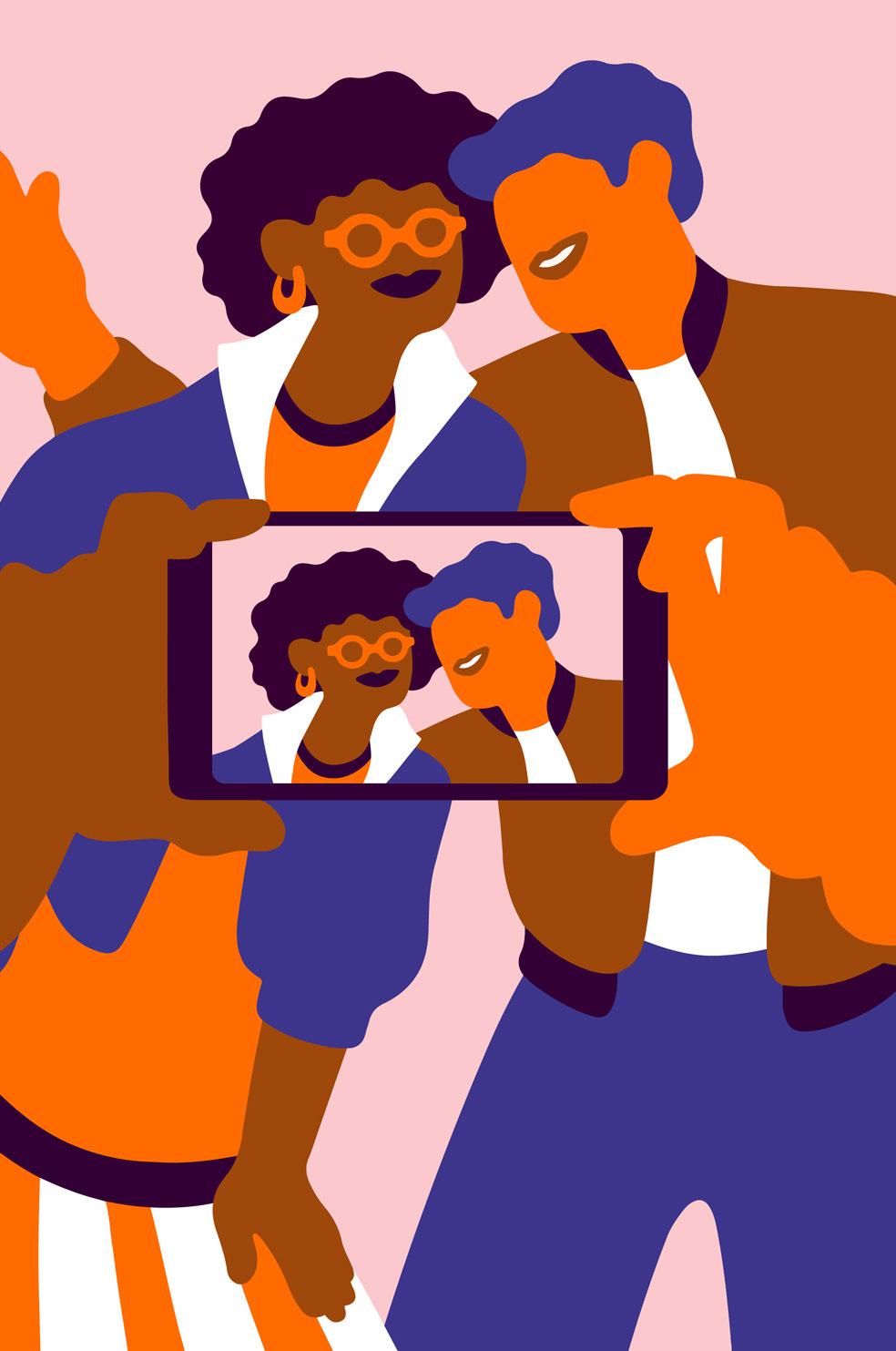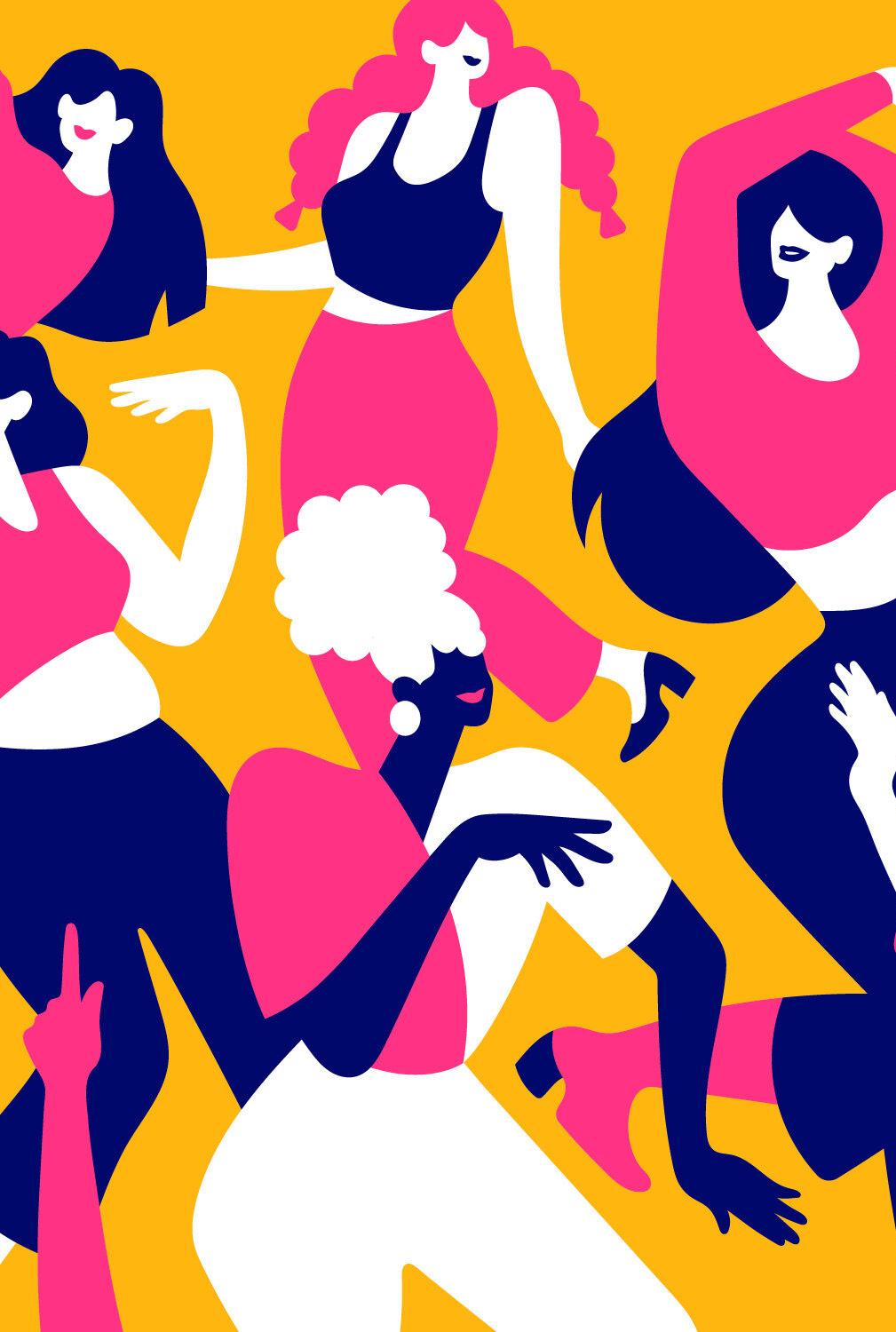
11 minute read
Is Valentine‘s Day Still About Love?
Leah discusses whether vegan products from mass meat producing companies are actually making efforts to prevent climate change or if corporations are profiting off of new trends. Veganism: the mother clucking debate
Leah Dunderdale-Smith Blogs & Lifestyle Writer
Advertisement
Following the success of the Greggs vegan sausage roll, KFC have introduced a vegan ‘Imposter Burger’: a Quorn fillet coated in the signature KFC eleven herbs and spices. The vegan burger has been met with increasing enthusiasm and praise for KFC online. However, it cannot be helped but consider that a vegan KFC burger is a contradiction. KFC’s primary business is the sale of chicken products, and it could be argued that the fundamental principles of veganism suggests vegans should not support such a brand in any capacity.
Whilst many argue that choosing a vegan product influences supply and demand by encouraging meat focused brands to invest in vegan products, it’s debatable how much impact this will have on a company that bears the word ‘Chicken’ in its name. To KFC, veganism is no more than a trend and thus a viable market. When considering Greggs, after the success of their vegan sausage roll they brought out a vegan steak bake. Whilst this is great at giving more vegan choices, the brand will continue to sell these alongside their meat sausage rolls and meat steak bakes. Greggs have simply added vegan products to appeal to vegan consumers, with nothing suggesting that meat eaters are ‘switching’ to these alternatives. Greggs and KFC are just looking to increase their market, not to change their brand ethics and ideals. It is dependable on your ethics as a vegan as to whether you choose to support brands that profit from the consumption of animal products, however shopping anywhere that is exclusively vegan and 100% cruelty free is unrealistic. Additionally, people turn vegan for reasons other than reducing the exploitation of animals, with other factors such as health and sustainability also influencing decision making. Giving vegan alternatives allows people to make informed choices, which is a positive step for the vegan movement.
It is important to make veganism accessible in order to reduce the myth that it is an impossible lifestyle. When turning vegan, people worry that it will impact on their social lives as it can be diet restrictive, so introducing vegan options into fast food shops like KFC is a great way to put these worries at bay. Whilst KFC does not exactly correlate with the ethics of veganism, the company is giving veganism a positive platform. The introduction of vegan alternatives in these prominent fast food chains normalises veganism by bringing it to the high street.
We must be optimistic that this positive publicity and promotion of veganism will continue past ‘Veganuary’; hopefully, those who follow a ‘flexitarian’ diet and participate in meat free Mondays will choose from the ever growing selection of meat free alternatives.
iS valentine’s day still about love?
Valentine’s Day. You either love it or you hate it. Usually this is dependent on whether you have a significant other, or instead spend the day trying with all your might to avoid such sickening displays of affection. But has this typical day of romance and love become yet another spoke in the all-consuming wheel of consumerism?
The shops are flooded with rose bouquets, heart-shaped chocolate boxes and fuchsia pink cards which say things like “I love you more than anything else in the whole wide world”. It’s clear that businesses are making a very satisfying profit from our cliché proclamations of love. Everywhere is under pressure to sell the most romantic cards, the cutest gifts - and we’re under pressure to buy them. Stereotypical portrayals of romance are heavily relied on by many, and the stores take full advantage of us. Is this a way of maximising profit? Or is it genuinely the way we want to show our loved ones how we feel?
It’s understandable to feel like we should cut out Valentine’s Day all-together. Surely, we shouldn’t need a specific day to tell our significant other our feelings towards them. With the increasing influence of social media, Valentine’s Day is becoming even more centred on outward appearances of love and the purchases we make that seemingly express them. Every couple seems to be posting their lavish gifts and romantic activities. Each year there appears to be less of a focus on genuine feelings and an increasing pressure to buy the perfect gift and having everyone know that you’re out having fun together. These companies hugely conform to stereotypes, putting pressure on couples to conform to certain roles which makes them easier to manipulate into categories.
However, making your loved one feel special is a big part of what Valentine’s Day should really be about. Buying flowers for your partner, or chocolates for your fellow single pals, can really make them feel special and loved. Though you may well be falling under the spell of capitalism when buying that pink soppy card, perhaps it’s the message written inside that’s really worth the most to the receiver.
So, this February the 14th, when you’re struggling to choose between the heart-shaped lollypop or the chocolate rose, think outside the box. Get creative and get personal. I believe we should stop the consumerdriven interpretations of romance and that this famous holiday should revert back to what it needed to be about all along - love.

Megan Johnson Blogs & Lifestyle Writer
BLOGS & LIFESTYLE

22 BLOGS & LIFESTYLE

REASONABLE NEW YEARs RESOLUTIONS
It’s New Years eve and we feel ourselves hurtling away from the cosy caress of December, and into a bleak January where the stale air of festivity still lingers, where the only day that is markedly different from the rest is ‘Blue Monday’ and to top it all off, summer feels like a decade away.
Ten seconds ‘till midnight... momentum is building as ‘Auld Lang Syne’ is chanted to the clinking of loosely held glasses yielding various beverages - all of which are instantly beginning to feel less appetising - and with the echoing fireworks, we crash into a brand new chunk of life that feels like it harnesses the power to propel us into success or to break us entirely. It is, however, anti-climatic.
Now it’s 2020, and it feels all at once exactly the same as it did ten seconds ago but simultaneously as though we immediately need to take grasp of the reins to a brand new self that is exponentially more productive, healthy and sociable. It would be unreasonable to assume that on the stroke of midnight, we can all instantly transform into a new elevated and gold gilded form of ourselves, much like what is often projected through social media feeds come January. This is where resolutions based around the idea of self re-invention have the potential to take the shape of ten years worth of pressure, all compressed into the abstract notion of a new decade.
And so arise the questions gracing everyone’s tongues: Why wait for the new year to embark on self improvement? Isn’t that like writing your to-do lists for the next month, all on the 1st? Year on year, the question is thrown around: “What are your resolutions? To which empty chimes of ‘weight loss’, ‘workout’ and ‘health’ are chorused in harmony. At the same time, shops are stripped of their comforting layer of mince pies and mulled wine, and packed neatly with detox blend teas and yoga mats.
Abstinence is something I have never enjoyed - does anyone though? I cant think of anything worse than taking a pledge to remove my favourite ‘bad’ food from my diet, because let’s face it, I am going to want that food. Instead, I’d prefer to prioritise eating more fruit every day in the interest of balance, which feels both more doable and more productive in the long run. There is nothing wrong with starting the new year on a blank slate, shedding some of the baggage accumulated from past years, and looking to the next ten with hope. I think resolutions are useful when done right - the key is to be kind and reasonable with yourself.
Perhaps you have been sitting on a project that you just never got around to starting; you might want to take up a new hobby; make an uplifting playlist of fresh music; or re-connect with an old friend. Here, a defined list of priorities might be just necessary to get the ball rolling and you will inevitably feel more fulfilled - more so than those resolutions that are based upon self hate, and those that will undoubtably fizzle out, only fulfilling a sole purpose of making January that bit more blue.
All in all, I think that it is important to give yourself some credit for getting this far, and instead of re-inventing yourself this new year (or decade), alter your routines and give yourself room to escape any ruts or dead ends you have found yourself in - in this way you can grow.
Nisha Chandar-Nair
Winter Love Island: The Diversity Debate
Niamh discusses if in a world of inclusivity, Love Island should be held responsible for their consistent lack of representation and diversity.
Statistics show that a contestant’s chances of finding love on Love Island are just one in 35,000. This isn’t to say that not everyone should have equal oppourtunities at achieving these minute odds.
Ethnic representation has consistently been talked about in relation to Love Island. In 2011 a census shows the decrease in the number of people in the UK who identify as White British from 94% to 86% in 2011. It’s clear the UK is getting increasingly culturally diverse, so Love Island needs to represent this change also. In season one of Love Island just two of the contestants identified as BAME from the entire cast of the show. It was only in 2018 that Love Island featured Samira Mighty, the first Black woman to appear on the show. The question has to be raised, what took them so long? Why did Black women thus far not fit the criteria of a Love Island contestant? Although it can be noticed that more recent seasons of Love Island feature a more accurate ethnic representation, there remains issues with the representation that does occur on Love Island, as it has been noticed that often Black people have a harder time in the villa than others. Yewande from the 2019 series was not picked by any of the male contestants during the first episode’s coupling, along with Marcel, Malin and Samira who were all picked last. Lanre was kicked off the 2019 series and commented “I can’t rule out that racism was a factor here. I think there may have been some unconscious racism.”. This suggests that putting people that are BAME on Love Island is not enough to cure the issue of making the show accessible and representative if, when they are on the show, their experience is tainted.
Aside from the fact Love Island is not able to successfully represent multiple ethnicities, their lack of representation of different body types has also been slammed by the public. It can be noticed that pretty much everyone that appears on Love Island has what can be widely accepted as the ‘ideal body’. This highlights one key area in which the show fails at representation as it displays unrealistic body types that may be either unattainable or unnatural to most people. This is heavily focused on among the female contestants: ex-islander Alexandra Cane tweeted “Where the curvy girls at?”.
The issue is just as prevalent among men who all appear to be incredibly muscular and often tall. As seen in this year’s winter Love Island, contestant Nas has been consistently rejected by girls who have commented on his height, along with the other islanders. This casual joking is shown on Love Island to be an accepted form of ridicule and is projected onto viewers, making shorter men potentially feel more insecure about their height after watching the show. The issue of lack of inclusivity of body types goes beyond representation as 1 in 4 people aged 18-24 claimed watching reality TV made them feel worried about their bodies. Love Island is the most watched TV programme among this age group highlighting the detrimental effects the show is having on its viewers due to the lack of representation.
The question is, are the Love Island producers doing everything to make the show accessible and representative? Some would argue the inclusion of more BAME contestants and the inclusion of plus size contestant Anna Vakili in 2019 is evidence of the show trying to do more. Others may argue that this is just the bare minimum of what can be done.
The worst part about all of this has to be the response from ITV to the criticism. Creative director Richard Cowles gave a problematic response, replying that the show simply wants islanders “to be attracted to one another”. The fact that the show has been criticised for a lack of representation of the BAME community and curvier, less muscular body types gives off the impression that the show deems these qualities unattractive, perpetuating an incredibly dangerous message to viewers.
Shows like Love Island have an enormous viewing from all types of people, including myself. That is not to say that we should boycott the show altogether, but it is important that as viewers we recognise the problems inherent in Love Island and call them out when they’re noticed. As always, it’s important to remember that there are many aspects of reality TV that aren’t very real.









